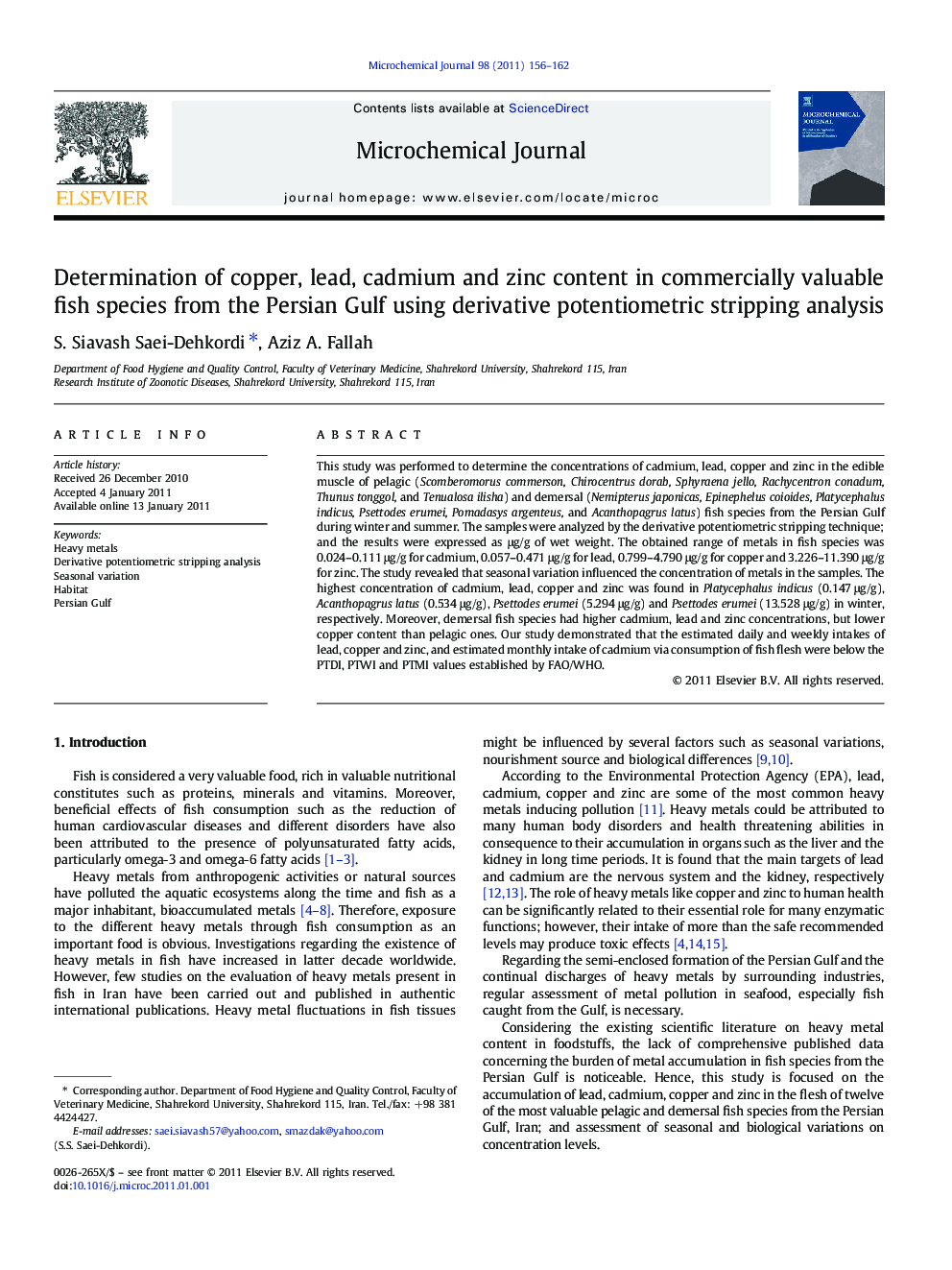| Article ID | Journal | Published Year | Pages | File Type |
|---|---|---|---|---|
| 10556947 | Microchemical Journal | 2011 | 7 Pages |
Abstract
This study was performed to determine the concentrations of cadmium, lead, copper and zinc in the edible muscle of pelagic (Scomberomorus commerson, Chirocentrus dorab, Sphyraena jello, Rachycentron conadum, Thunus tonggol, and Tenualosa ilisha) and demersal (Nemipterus japonicas, Epinephelus coioides, Platycephalus indicus, Psettodes erumei, Pomadasys argenteus, and Acanthopagrus latus) fish species from the Persian Gulf during winter and summer. The samples were analyzed by the derivative potentiometric stripping technique; and the results were expressed as μg/g of wet weight. The obtained range of metals in fish species was 0.024-0.111 μg/g for cadmium, 0.057-0.471 μg/g for lead, 0.799-4.790 μg/g for copper and 3.226-11.390 μg/g for zinc. The study revealed that seasonal variation influenced the concentration of metals in the samples. The highest concentration of cadmium, lead, copper and zinc was found in Platycephalus indicus (0.147 μg/g), Acanthopagrus latus (0.534 μg/g), Psettodes erumei (5.294 μg/g) and Psettodes erumei (13.528 μg/g) in winter, respectively. Moreover, demersal fish species had higher cadmium, lead and zinc concentrations, but lower copper content than pelagic ones. Our study demonstrated that the estimated daily and weekly intakes of lead, copper and zinc, and estimated monthly intake of cadmium via consumption of fish flesh were below the PTDI, PTWI and PTMI values established by FAO/WHO.
Related Topics
Physical Sciences and Engineering
Chemistry
Analytical Chemistry
Authors
S. Siavash Saei-Dehkordi, Aziz A. Fallah,
